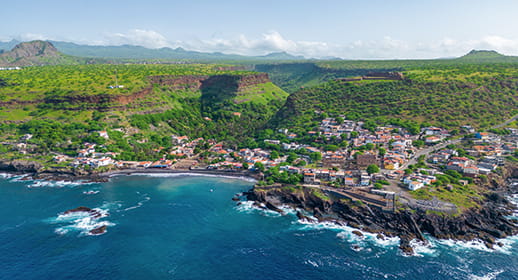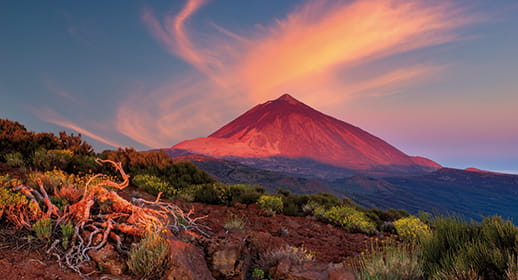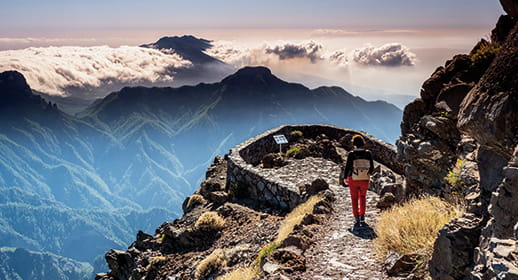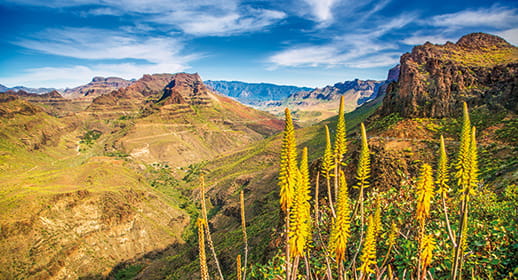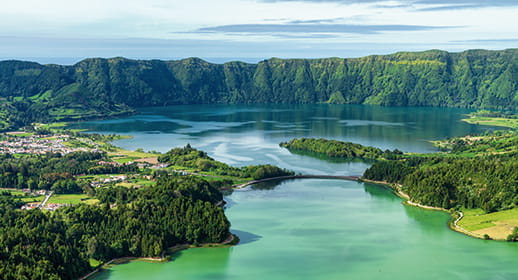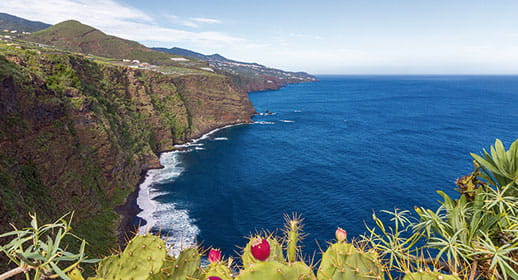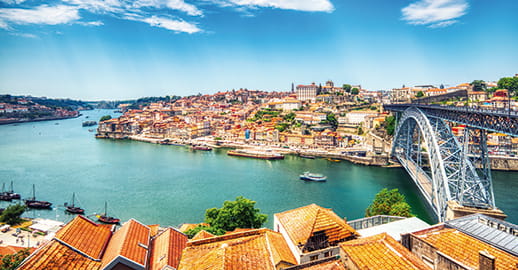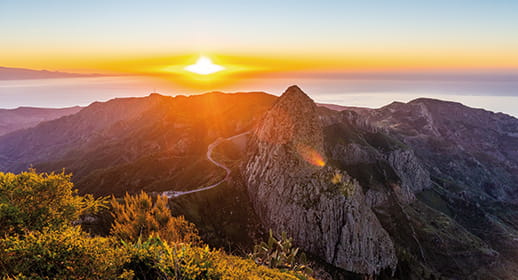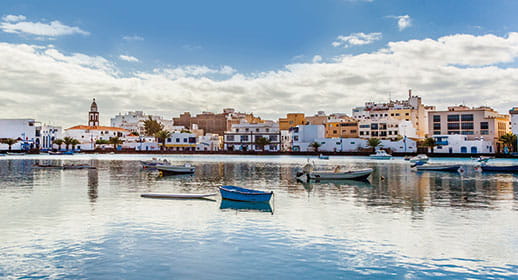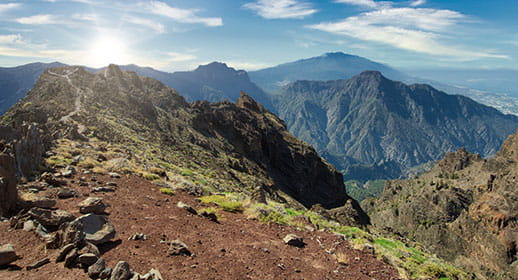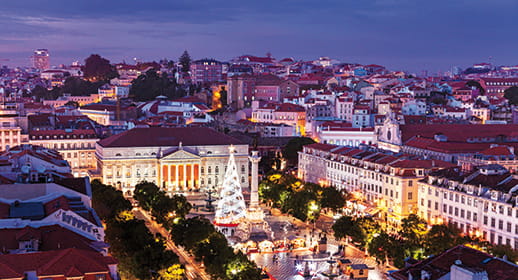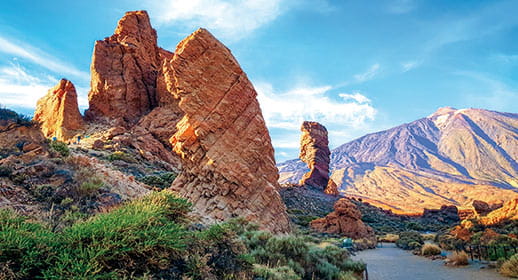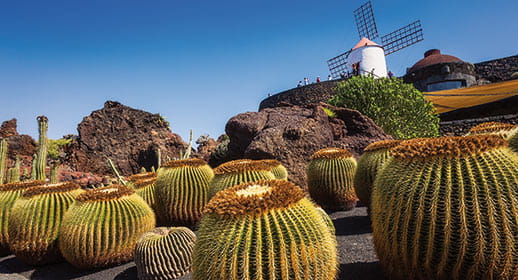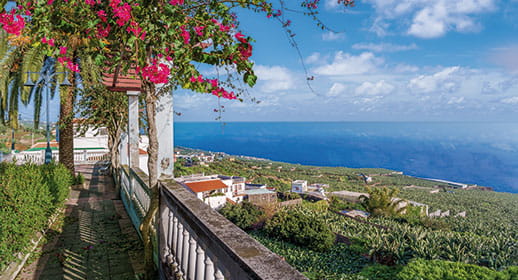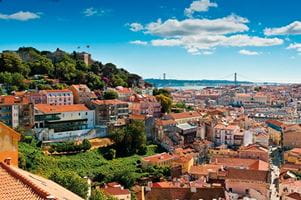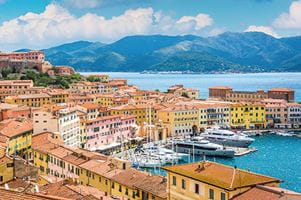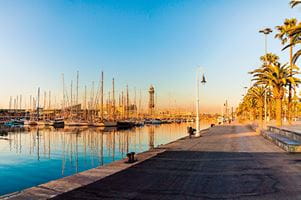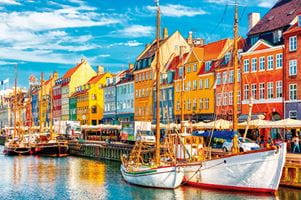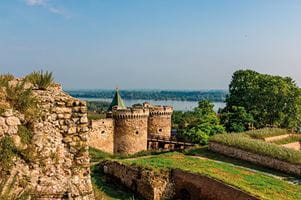Destinations
The best things to do in La Palma
Come with us on one of our luxury, no-fly cruises to the Canary Islands. Escape to the sunshine and explore a variety of wonderful destinations including the unique island of La Palma.
Our small-ship cruises to La Palma offer all-inclusive, first-class service and fine dining. And your home-from-home will be a luxuriously-appointed cabin with its own private balcony.
On a Canary Islands cruise with Saga, you’ll unpack just once. Visit a kaleidoscope of new places and bring back hundreds of new memories.
What to see in La Palma
The world knows its affectionate nickname - now come and visit the delightful little island itself.
La Palma sits just off northwestern Africa, in the Canary Islands group. It’s the youngest Canary Island; around 1.8 million years old. That’s young compared to the British Isles, which are around 2,700 million years old. Its volcanic origins have bequeathed it a stunning, dramatic terrain, with sweeping laurel and pine forests and towering volcanoes like Tenegula and Cumbre Vieja.
There have been eight major eruptions on La Palma since the Spanish settlers began keeping formal records. The most recent began on September 19th, 2021 and rumbled on for 85 days. More than 2,000 homes were buried by the lava, but fortunately no human lives were lost.
Now visitors can take walking tours over the newest volcano (christened Tajogaite), and there are already signs that the lava flow, like its predecessors, will eventually become a fertile home for the island’s banana trees and grape vines. The people of La Isla Bonita are a resilient race. The volcanoes have left La Palma an underwater legacy, too: a submarine volcanic landscape of caves, arches and walls teeming with fascinating and often unique sea life. The island is one of three marine reserves in the Canaries.
La Palma was an important port on the trading route between Europe and America. As you stroll through the cobbled streets of the capital, you’ll see the handsome colonial-style manor houses of the wealthy merchants who lived there in its glory days.
There’s also a little-known historic association between La Palma and Cuba. In the 19th century, many people from the island emigrated to America, and most found a temporary home in Cuba. The emigrants who returned to their native island brought with them the skills for cultivating tobacco. Even today, there are several pureros who roll tobacco in Breña Alta, and there is a nearby cigar factory, Puros Artesanos Julio, where the entire process is manual.
La Caldera de Taburiente National Park
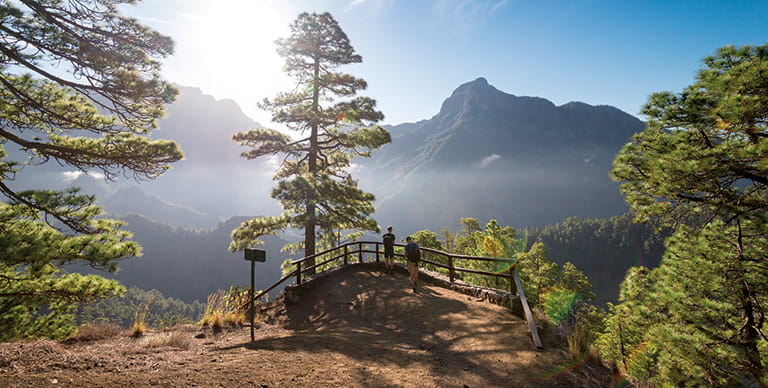
This is one of La Palma’s greatest scenic treasures. A giant caldera of around 10 kilometres wide with walls rising to more than 2,000 metres high, it looks like a volcanic crater but is actually a mountain collapsed in on itself.
The park is clad in thick Canary pine forests, crisscrossed by dozens of hiking trails. There are clear freshwater springs trickling through the park or tumbling as waterfalls down jagged, lichen-covered rock faces and into deep ravines. Finally, the water runs deep into the caldera, where it disappears underground. At the very bottom of the caldera, you can see the remains of a primitive altar which in ancient times was dedicated to the worship of a deity called Abora.
As well as hiking in the Caldera, you can literally look down on it. Visit the Roque de los Muchachos – the park’s peak, at 2,426 metres above sea level - for a bird’s eye view over the whole expanse of the great caldera. If you go in the morning, you’ll get a pin-sharp view (which is why the Roque de los Muchachos Astrophysical Observatory is situated there). In the afternoon, you’ll be more likely to see the famous sight of clouds spilling down over the lips of the caldera.
The park has an informative visitors’ centre with an exhibition hall, shop and library.
Your leisure day in Santa Cruz de La Palma
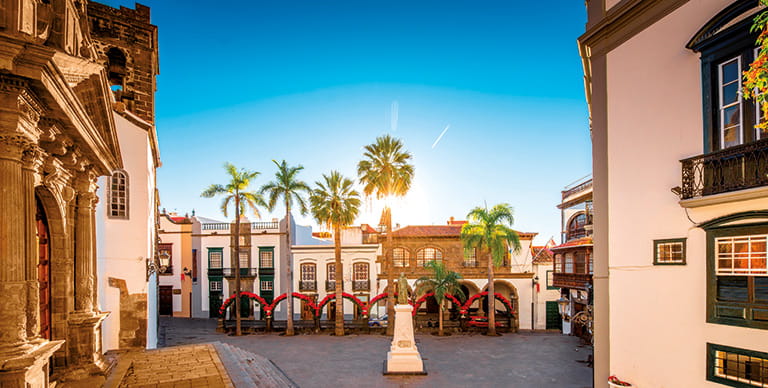
The entire old city centre of Santa Cruz has been declared an historical monument, and is a great way to start exploring the island’s capital.
Begin on the cobblestoned Calle O’Daly – also known as Calle Real. And if the first street name sounds a little un-Spanish, that’s because it commemorates an Irish merchant who settled in Santa Cruz in the 18th century. He rose to political prominence in the city, helping bring about its claim to fame as Spain’s first democratically-elected local government.
Renaissance splendour
Once on Calle O’Daly, look out for the Palacio Salazar, once a mansion belonging to a wealthy family of that name but now an exhibition centre that also sells handicrafts and souvenirs. You’ll soon arrive at Plaza de España, located between the Town Hall and the Iglesia de El Salvador. Passing the Town Hall, note the reliefs demonstrating the virtues and vices of good and bad government – O’Daly would be proud. This area contains the best examples of Renaissance architecture in the Canaries.
The church of El Salvador stands overlooking the square. Its magnificent interior has a glittering pulpit dating back to 1750 and its ceiling is considered to be the best example of Mudéjar (Islamic-style) architecture in all the Canaries.
The lavishly-furnished Iglesia de San Francisco is a designated historic monument: a series of exhibition rooms grouped around the cloister showcase its artistic and historical collections.
La Palma History
Off Calle O’Daly is Calle Anselmo Pérez de Brito. Stroll along it to the Plaza de la Almeda, looking out for the humorous statue of ‘Napoleon Bonaparte’ dating from the short time in the island’s history when it was under French rule.
Behind the plaza you’ll find a replica of Christopher Columbus’ flagship ‘Santa Maria’ (called by the locals the Barco de la Virgen). Exploring the ship, you’ll marvel at the conditions that its crew of 39 men had to endure in their epic journey to the New World.
Housed in a former 16th-century Franciscan convent, the Island Museum (Museo Insular) showcases a wide-ranging collection covering everything from ethnography to natural sciences, 20th century and modern Spanish art, and an impressive shell and coral collection. (Plaza San Francisco 3).
Savour the sights at La Recova – the municipal market
This bustling market is built on the site of the old Hospital de Dolores. The fine array of local delicacies provides a feast for all the senses: perhaps pick up a bottle of local wine and some artisan cheese and bread for a picnic on the beach. Or try a sugar-cane juice drink with rum, mint and lemon… or maybe without the rum if you’re visiting early! (Plaza de Mercado).
Admire the beautiful Flowered Balconies of Avenida Maritima
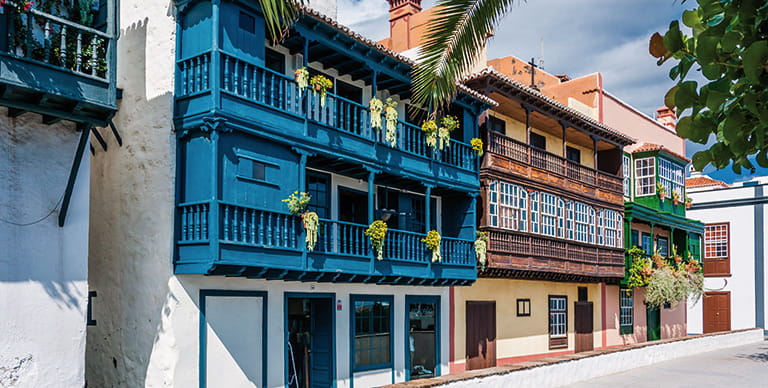
Make your way towards the sea and you’ll find the visual (and photographic) treats that are the floral balconies of the historic houses running along the Avenida Maritima. The houses, dating from the 16th and 17th centuries, have handsome carved wooden balconies that are festooned with growing flowers - each house trying to outdo its neighbours with its magnificent display.
Expert advice at your service
If you’ve any questions about La Palma, do pop along to your Explore Ashore Desk. The knowledgeable advisors are not just there to organise excursions; they’ll be delighted to help you with any information you need to help make the most of your leisure day out.
La Palma excursion - La Hacienda and Silk Museum
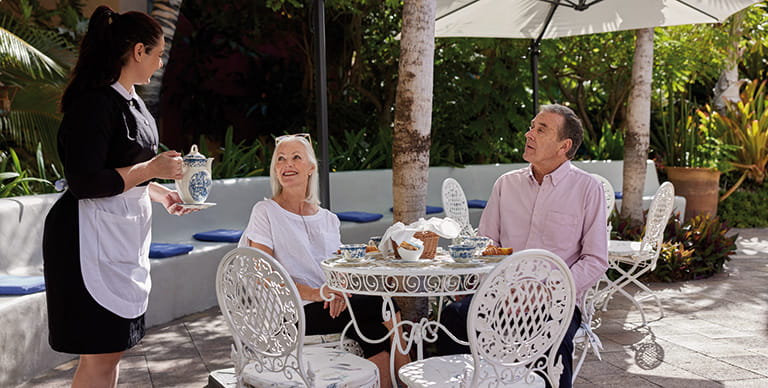
Here’s a wonderful chance to see more of the island’s lush scenery as we take you to El Paso along mountain roads, passing vineyards and banana plantations along the way. At El Paso, stroll to the unique Hilanderas Silk Museum, where silk is woven exactly as it has been for 500 years. The museum runs workshops and exhibitions, and there is a gift shop.
Afterwards, come with us to the wonderful Hacienda de Abajo. In the 17th century it was the island’s richest sugar estate. Now it’s been lovingly transformed into a small and luxurious hotel. Your guide will take you on a tour of the main rooms, rich with sculptures, paintings, fine furniture and porcelain, as well as some superb tapestries.
Afterwards, enjoy tea on the terrace overlooking the Atlantic Ocean (weather permitting of course), with a choice of delicious cakes and a selection of specialty teas.
On the way back to Santa Cruz, we’ll take a short photo-op-stop at La Glorieta Square, where you’ll have a chance to see the famous mosaics by local artist Luis Morera.
What is La Palma best known for?
La Palma is best known as a UNESCO Biosphere Reserve, renowned for its clear, night skies, making it one of the best places in the world for stargazing. The island is also famous for its volcanic geography and varied landscapes including forests, volcanic craters and coastlines.How many days do you need in La Palma?
To truly explore La Palma, a three-to-four-day visit is ideal, but a full day in port provides time to see some of the key highlights, from the National Park of Caldera de Taburiente to the capital of Santa Cruz with its 16th-century Castilian architecture, wooden balconies and cobbled lanes. Be sure to experience an evening under the stars so you can experience La Palma’s clear, night skies.Why are tourists visiting La Palma?
Tourists visit La Palma for its year-round sunshine, natural beauty and outdoor activities. Known for its hiking and stargazing, the island offers a blend of adventure and relaxation for travellers. The island’s clear skies attract those seeking a peaceful and surreal escape.La Palma is just one of the sought-after Canary Islands. For more adventures, explore our other cruises to the Canaries. Discover the sunny shores of Tenerife, more volcanic wonders in Lanzarote, or the green landscapes of La Gomera – all waiting for you to discover.
The opinions expressed are those of the author and are not held by Saga unless specifically stated.
The material is for general information only and does not constitute investment, tax, legal, medical or other form of advice. You should not rely on this information to make (or refrain from making) any decisions. Always obtain independent, professional advice for your own particular situation.
